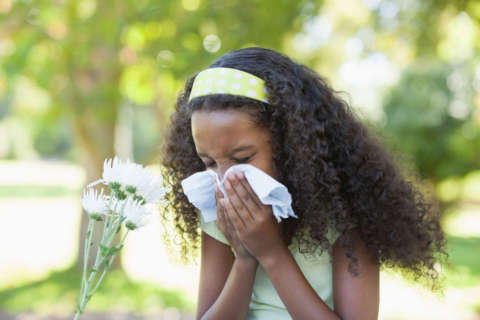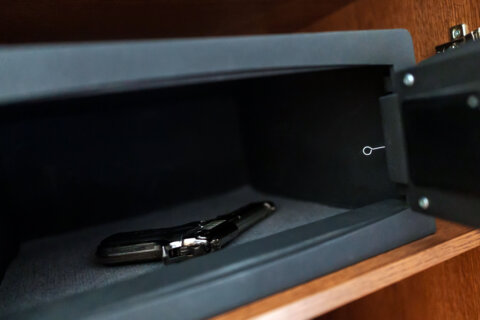It’s the time of year to get your kids organized to go back to school — whether they’re ready or not. What’s on the checklist? Clothes, school supplies, backpacks and lunch boxes. If your child has allergies and/or asthma, you need to add a few more items. This four-step checklist makes sure returning to school is safe and worry-free for everyone.
1. Nasal allergies can get worse at school, and fall pollen can lead to symptoms like sneezing and congestion on the playground. Many kids are allergic to dust mites, which are found in carpeting in many classrooms. Pets in the classroom, such as rabbits and guinea pigs, can cause allergy flare-ups. If the classroom needs a pet, fish are the safest in terms of allergies and asthma. In fact, even if there isn’t a “classroom pet,” children with cats at home may bring dander into the classroom on their clothing. That can lead to symptoms for cat-allergic kids. If symptoms begin to worsen at school, check with the teacher to find out what allergy sources might be present. For example, open windows can bring in pollen. Make sure your child has medication to control his or her allergies. If nasal problems are out of control, use the American College of Allergy, Asthma & Immunology’s Find an Allergist tool to locate a board-certified allergist in your area.
[See: 8 Surprising Facts About Asthma and Seasonal Allergies.]
2. School time can be wheezing time for your child with asthma. All the risks discussed above can cause asthma to flare at school. Another concern for your child with asthma is exercise-induced bronchospasm, also known as exercise-induced asthma. EIB may develop when playing outside or participating in a physical education class in the gym. Make sure you’ve sent an up-to-date rescue albuterol inhaler to school in case of cough or wheezing. If your child has EIB, let the school know they need to use their albuterol inhaler before exercise. Most importantly, children with asthma should have an “asthma action plan” in place at school so their teacher and school nurse know what to do in case of an asthma flare up. It’s vital that children with asthma correctly use their preventive medications. When asthma medications are used correctly, the chances are much less of an asthma flare-up that interferes with school. Asthma accounts for approximately 10.5 million lost school days per year, but studies have shown that children under the care of an allergist for asthma have fewer emergency room visits and better attendance at school.
[See: Is it Healthy to Sleep With Your Pets?]
3. Food allergies can lead to life-threatening reactions, but following a few rules can help keep everyone safe. Stress the importance of knowing what foods to avoid, and your child should know it’s never OK to accept or trade foods at school. Medical identification jewelry is a good way to alert teachers and classmates alike to a specific food allergy. Make sure they always have their prescribed, up-to-date epinephrine autoinjector with them and know when to use it. If your child is not old enough, or not permitted to carry it, he or she needs to know where the epinephrine autoinjectors are located at school and which school personnel can access them. Talk to the teacher, principal and school nurse to understand the school’s plans for children with food allergies. It’s important that the school knows to contact emergency services (911) if epinephrine is administered for an allergic reaction. Ask what the school does to help reduce food allergens in the classroom. Find out what precautions are taken in the cafeteria and for field trips outside of school. Parents and caregivers must know all protections are in place for their child with a food allergy when he or she is at school.
4. Before school starts, schedule a visit for your child with their health care provider or board-certified allergist. Make sure all allergy and asthma action plans are ready for the school year, the child’s allergies and asthma are under control and all medications are up to date. For children with particularly bothersome allergies, an allergist may prescribe immunotherapy ( allergy shots), which can modify and help prevent asthma development. If your child is old enough, make sure he or she knows how to properly use any prescribed inhaler device or epinephrine autoinjector.
[See: 7 Lifestyle Tips to Manage Your Asthma.]
By having your back-to-school allegry checklist in order, you’re now ready to start the school year right. You can support your child and make sure the year starts with an A-plus grade.
More from U.S. News
How to Survive Ragweed Allergy Season
8 Surprising Facts About Asthma and Seasonal Allergies
Pharmacist Recommended Cough, Cold and Allergy Medicines
It’s Time to Start Your Child’s Back-to-School Allergy Checklist originally appeared on usnews.com






